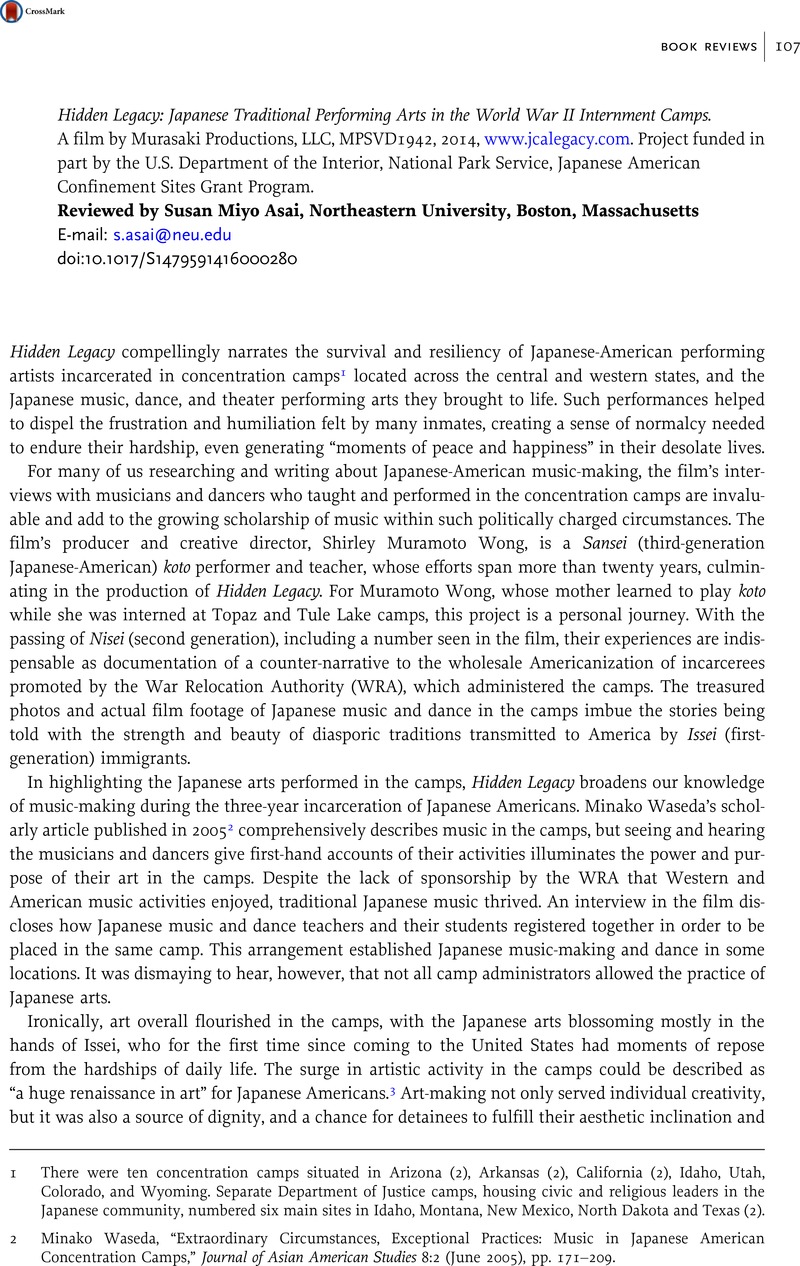No CrossRef data available.
Published online by Cambridge University Press: 16 January 2017

1 There were ten concentration camps situated in Arizona (2), Arkansas (2), California (2), Idaho, Utah, Colorado, and Wyoming. Separate Department of Justice camps, housing civic and religious leaders in the Japanese community, numbered six main sites in Idaho, Montana, New Mexico, North Dakota and Texas (2).
2 Waseda, Minako, “Extraordinary Circumstances, Exceptional Practices: Music in Japanese American Concentration Camps,” Journal of Asian American Studies 8:2 (June 2005), pp. 171–209 CrossRefGoogle Scholar.
3 Noguchi, Andy, “Camp Art: Strength, Dignity and Culture in the Concentration Camps,” East Wind: Culture and Politics of Asians in the U.S. 2:2 (1983), p. 54Google Scholar.
4 Shirley Muramoto Wong, Hidden Legacy: Tribute to Teachers of Japanese Traditional Arts in the War Relocation Authority Camps, Concert Program, Koyasan Buddhist Temple, Los Angeles, California, 2010, p. 3.
5 Waseda, “Extraordinary Circumstances, Exceptional Practices,” p. 176.